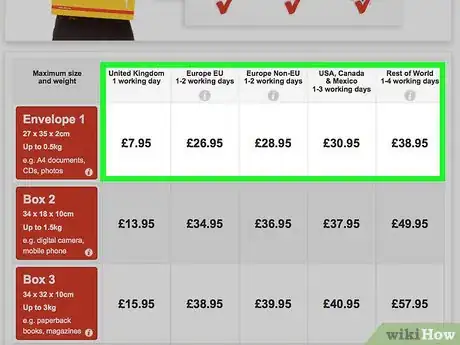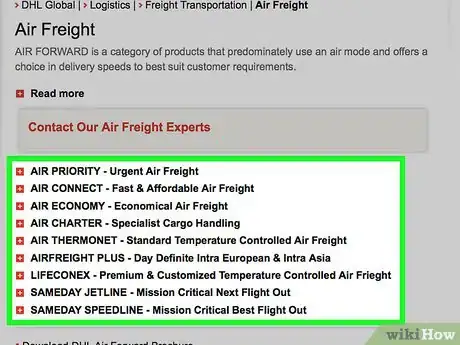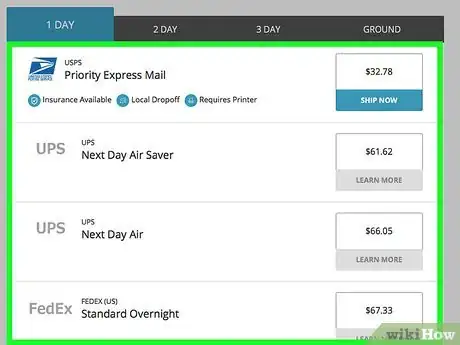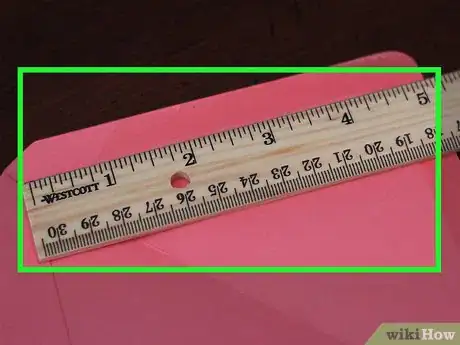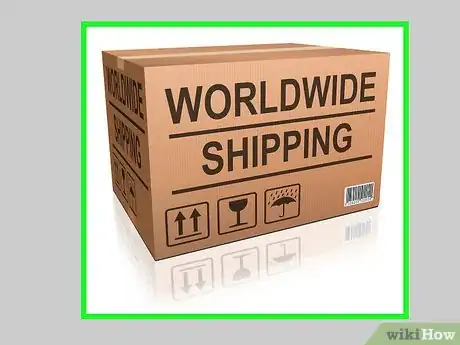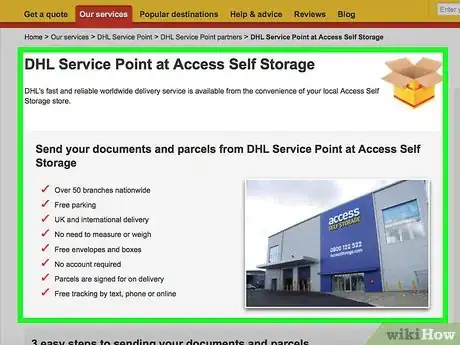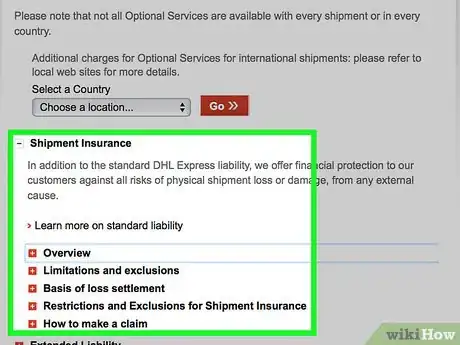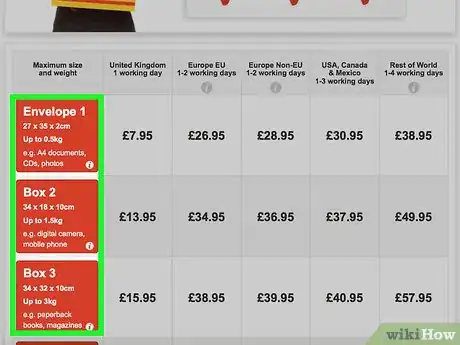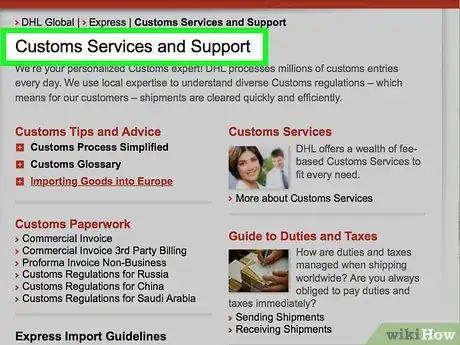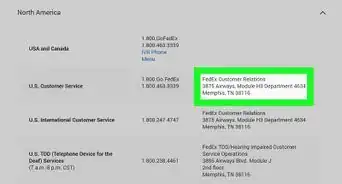This article was co-authored by wikiHow Staff. Our trained team of editors and researchers validate articles for accuracy and comprehensiveness. wikiHow's Content Management Team carefully monitors the work from our editorial staff to ensure that each article is backed by trusted research and meets our high quality standards.
This article has been viewed 102,419 times.
Learn more...
Sometimes you have to ship something that is too big to be sent by post and too important or urgent to be sent by sea freight or ground transportation. Air freighting is often the most cost effective and quickest way of shipping goods whether you are moving to another state or country, sending a bulk shipment, or needing to send a package as quickly as possible. There are many aspects to consider when shipping by air freight, from methods to values, from insurance to packaging. Consulting all of your air freighting options, from shipping services to airlines, will give you the best estimate of cost and time possible. Whatever to timeline or budget there is an air freighting option out there for you.
Steps
Choosing a Shipping Service
-
1Consider cost and time. Air freight is generally the quickest method of freighting goods, but that also means that is often the most expensive. Considering the urgency of your shipments, where it needs to arrive, and what your budget is will help you decide if air freighting is right for your shipment.
- A general rule is the quicker the shipment the more expensive it will be.
-
2Ship your package with airlines. Most airlines also offer cargo freighting services where you pay an additional fee to air freight a package in the cargo hold of the plane. Airline shipping is particularly convenient if you plan on travelling with your shipment as not all airline shipping services offer residential deliveries and pickups.[1]
- Contact your airline and ask about their cargo freighting methods, costs, and customs policies. Ask questions like “I’m shipping a package that weighs around 300 lbs., will I be able to freight in my flight’s cargo?”, “How many packages can I ship on my flight specifically?”, “What are the plane’s weight and size restrictions?”[2]
Advertisement -
3Compare global carrier and freight services. There are a variety of carriers and freight services available both in the U.S. and internationally. Most of these carriers, like UPS, USPS, FedEx, and DHL, offer global web-based support. Research and compare various carriers to decide which carrier offers services that are best for your shipment.[3]
- Look for the differences in price points and methods between carriers. Most global carriers will provide you with a variety of options, from next day priority air freighting to standard air freighting.
- Most carrier websites will also allow you to get a rough quote on the cost and time of your shipment. However, you’ll need to know the dimensions, weight, and shipping method to get an accurate quote.
Measuring and Weighing Your Shipment
-
1Weigh your shipment. Weigh the items you plan on shipping by using a scale. This can be done at your chosen shipping service, like UPS or DHL, or can be done at home on a bathroom scale. Place your item on the scale and write down its exact weight. Some carriers only ask for whole numbers when asking for the package weight. In this case, round your package’s weight up to the nearest whole number. For example, if your package is 18.5 pounds it should be rounded to 19 pounds.
- If your item is too large to view the scale you may have to weigh it at one of your shipping carrier’s stores. Alternatively, you can weigh yourself, hold the package and step onto your scale, and subtract your weight from the combined weight to get an estimate of how much your package weighs.
-
2Find your shipment’s dimensions. Measure your shipment to determine its width, height, and length in inches. Use a tape measure to measure your shipments dimensions and have an estimate of its size. Once you have a good estimate you how large your shipment is you will be able to find the right package or box for it.
- If the item you are shipping is not squared or rectangular, measure the largest points of its length, width, and height to determine what box you’ll need.
-
3Select a box and pack your items. Select a box based on the type of object you are shipping. There are many different types of shipping packages and boxes, many of which are specialized for specific items. Consult your shipping service to inquire about recommendations for packages based on the item your shipping and ask if you can purchase that box from them.[4]
- Some shipping services will pack your boxes for you. Although, many would prefer you pack them yourself.
- Be sure to add extra padding for fragile materials, like foam, packing peanuts, and bubble wrap.
Shipping Your Package
-
1Bring your package to your shipping service. Once you have received your quote and chosen your shipping service you may bring your package to one of your shipping service’s stores. An employee will assist you in finalizing your weight and dimensions and will begin go over rates, values, and methods.
- If your package is being picked up in a residential area, be sure to print your shipping label and adhere it to your package. Make sure that all fees are paid, values declared, and insurances taken before having your package picked up for shipping.
-
2Declare your package’s value. Declaring your package’s value will allow your shipping service to determine how liable they will be for your package. You may also choose to take out the maximum declared value, but that often comes with an associated fee. There is no set rubric for declaring your package’s value, as some packages might have sentimental value while other may be expensive. Use your own discretion to determine how much you think your package is worth.
- Every shipping service is different. Ask your shipping service what their liabilities are, what maximum value can be declared, and what range of value they recommend shipping without insurance.
- Ask your shipping service questions like, “What is the maximum value I can declare for a package?”, “What are your fees for declaring maximum value?”, or “What value range do you recommend for the items I am shipping?”
-
3Purchase insurance. Although not required, purchasing shipping insurance for your package will ensure your shipping service’s liability for damaged, lost, or misplaced goods. Most carriers have limits and exclusions in place, but a general rule for global air freighting is an insurance policy cover $500,000 per shipment for approved commodities. Get in touch with your shipping service to find out if your shipment qualifies for insurance and what policy they recommend.
- Ask your shipping service questions, like “I would like to insure my package, what additional coverage does your insurance provide?”, “How much should my insurance policy cover in relationship to my declared value?”, “How much does an insurance policy cost and what are it’s terms and conditions?”
-
4Choose a shipping method. Each shipping service offers different shipping methods, but most will offer a wide variety of times for air freighting. Choose your shipping method based on cost calculations as well as time constraints. Most shipping services will offer at least a few options including priority or next day shipping, standard or economy shipping, and cargo or oversized package shipping.[5]
- Ask your shipping service questions about which shipping method you should choose, like “Is my package oversized?”, “How long does your standard or economy shipping take?”, or “When can you guarantee my package’s arrival?”
-
5Ask your shipping service about their international customs policies. If you are shipping internationally than you will likely need to fill out extra paperwork. Consult your shipping service about export and import declarations, customs policies, and air waybills. Most global shipping services and airlines have representatives that can provide you with all necessary paperwork.
- Import and export customs policies vary by country to country. Your shipping service will likely be familiar with the customs policies of your country and will have information available regarding the policies of the countries you may be shipping to.
- Cargo air waybills are indexical tracking documents used in airline air freighting only.
Community Q&A
-
QuestionWhat are the pallet dimensions for Air Freight?
 Community AnswerThere are at 11 difference standard pallet sizes for Airfreight. They are Call LD1, LD2....LD11. For standard commuter flights, the height is the limiting factor at 163 cm max. However there are cargo flights with a height limit of up to 318 cm. Best to ask your Air Freight agent who can check flights, routes, and size limits.
Community AnswerThere are at 11 difference standard pallet sizes for Airfreight. They are Call LD1, LD2....LD11. For standard commuter flights, the height is the limiting factor at 163 cm max. However there are cargo flights with a height limit of up to 318 cm. Best to ask your Air Freight agent who can check flights, routes, and size limits. -
QuestionIf I want to send something from China to India by airplane, how much will it cost? What is the cheapest way for me to ship this item?
 Community AnswerThe cost will depend how big the package is and the method of shipping you choose. One of the large carries (DHL, TNT, FEDEX) is probably your best bet.
Community AnswerThe cost will depend how big the package is and the method of shipping you choose. One of the large carries (DHL, TNT, FEDEX) is probably your best bet. -
QuestionCan I claim the delivery items without ID?
 DonaganTop AnswererIf you go to a receiving office to pick up the items, you will be expected to show ID.
DonaganTop AnswererIf you go to a receiving office to pick up the items, you will be expected to show ID.
References
- ↑ https://www.aacargo.com/ship/tools.html
- ↑ https://www.aacargo.com/ship/aircraft-containers.html
- ↑ https://wwwapps.ups.com/fctc/timeandcost?loc=en_US&FREIGHT_TYPE=Air
- ↑ https://www.ups.com/content/us/en/resources/ship/packaging/prepare/freight.html
- ↑ http://www.dhl-usa.com/en/logistics/freight_transportation/air_freight.html
